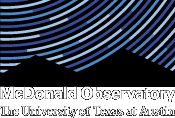McDonald Observatory Celebrates October Solar Eclipse
On Saturday, October 14, Texans experienced a rare and beautiful annular “ring of fire” solar eclipse. It swept into the state from the border of New Mexico and exited by way of the Coastal Bend. Midland-Odessa, San Antonio, and Corpus Christi were all witness to the annular eclipse. The whole state was able to see a partial eclipse.

